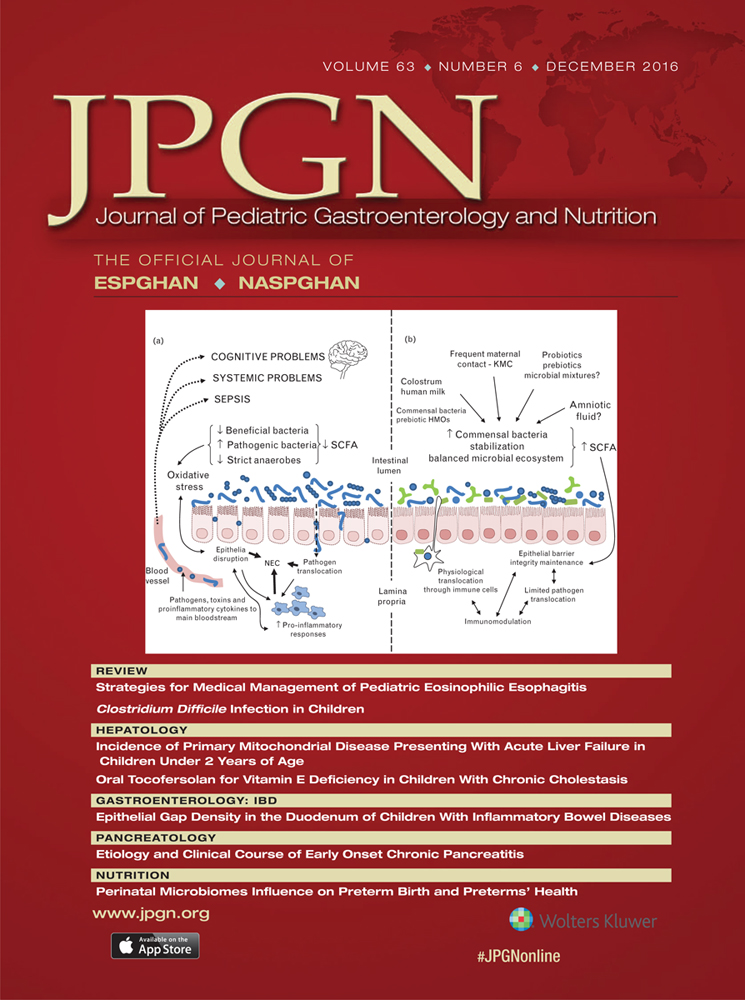Effect of Formula Containing Lactobacillus reuteri DSM 17938 on Fecal Microbiota of Infants Born by Cesarean-Section
Supplemental digital content is available for this article. Direct URL citations appear in the printed text, and links to the digital files are provided in the HTML text of this article on the journal's Web site (www.jpgn.org).
www.clinicaltrials.gov registration number: NCT01119170 (Safety of D-lactate Producing Probiotics).
The infant formulas tested in this trial are commercialized by Nestlé Nutrition, which sponsored the study. Nestlé Nutrition participated in the study design, the review of the report, and the decision to submit the manuscript for publication.
C.L.G.R, M.L., C.N-B., and B.B. are employees of Nestec. Nestlé Nutrition and Nestec are subsidiary companies of the Nestlé group. The other authors report no conflicts of interest.
ABSTRACT
Objectives:
Microbiota modulation by probiotics in infants born by cesarean (C)-section is poorly understood. We aimed at assessing the response of C-section–delivered infant microbiota to a formula containing Lactobacillus reuteri Deutsche Sammlung von Mikroorganismen und Zellkulturen GmbH (DSM) 17938 and comparing it with that of vaginally delivered infants.
Methods:
Infants delivered by C-section (C) and vaginally (V) were randomized to receive either control formula (CCt, n = 10; VCt, n = 10) or the same formula containing L reuteri (CLr, n = 11; VLr, n = 9) within 72 hours following birth. Stool samples were collected at 2 weeks and 4 months of age. Microbial DNA was extracted, amplified, and pyrosequenced.
Results:
The phylogenetic profiles of the CLr, VCt, and VLr microbiota were not significantly different at any age but diverged from that of CCt at 2 weeks. Compared with VCt, CCt displayed lower Bifidobacterium and higher Enterobacter, unclassified Enterobacteriaceae, Enterococcus, Clostridium, and unclassified Clostridiaceae relative abundance at 2 weeks, as well as lower Collinsella and higher Enterococcus and Coprococcus abundance at 4 months. The level of most of these taxa was not significantly different between the CLr and the vaginal-delivery groups. Compared with VCt, the only difference observed in VLr microbiota was higher Lactobacillus at the 2 study ages and Coprococcus at 4 months.
Conclusions:
Our results show that a formula containing L reuteri DSM 17938 does not essentially alter the microbiota in vaginally born infants. In C-section–delivered infants, however, this strain seems to play the role of keystone species by modulating the early development of the microbiota toward the composition found after vaginal delivery.




